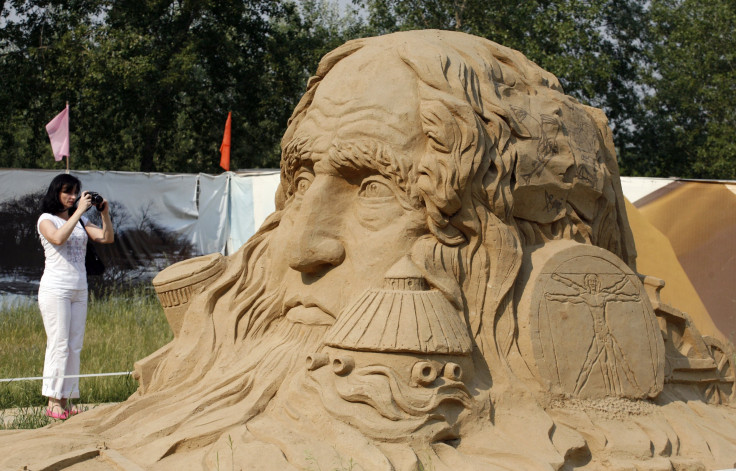Leonardo Da Vinci’s ‘Irrelevant’ Doodles Were The First Attempt To Codify Laws Of Friction, Scientists Discover

Leonardo da Vinci — painter, mathematician, inventor and scientist extraordinaire — was, in the truest sense of the words, a Renaissance Man. So much so that more than 500 years after he doodled in them, his sketchbooks are still capable of throwing up surprising secrets.
In a new paper published in the latest edition of the journal Wear, a researcher has shown that some of the doodles in da Vinci's sketchbooks that had hitherto been dismissed as "irrelevant" were, in fact, attempts to codify one of the most fundamental aspect of nature — friction.
"The sketches and text show Leonardo understood the fundamentals of friction in 1493. He knew that the force of friction acting between two sliding surfaces is proportional to the load pressing the surfaces together and that friction is independent of the apparent area of contact between the two surfaces," lead researcher Ian Hutchings, a professor of manufacturing engineering at the University of Cambridge, said in a statement. "These are the ‘laws of friction’ that we nowadays usually credit to a French scientist, Guillaume Amontons, working two hundred years later.”
Scientists and science historians have long known that the Italian polymath had conducted the first systematic study of friction — which underpins the modern science of tribology. However, they did not know when and how his earliest experiments in friction started. Now, Hutchings and his colleagues have discovered that his first statement of the laws of friction was in the form of a scribble in a tiny notebook dating back to 1493.
For instance, one scribble, describing rough sketches showing rows of blocks being pulled by a weight hanging over a pulley, states: "Friction is of double the effort for double the weight." This is a slightly different version of what is now known as Amontons' first law of friction.
"Leonardo’s sketches and notes were undoubtedly based on experiments, probably with lubricated contacts," Hutchings said in the statement. "He appreciated that friction depends on the nature of surfaces and the state of lubrication and his use and understanding of the ratios between frictional force and weight was much more nuanced than many have suggested."
Although the notebook had previously been scrutinized by art historians, they chose to focus on a sketch of an old woman in black pencil with a line below reading "cosa bella mortal passa e non dura," which translates to "mortal beauty passes and does not last." The other sketches and doodles below it were, in the 1920s, dismissed as "irrelevant notes and diagrams in red chalk."
"Leonardo’s 20-year study of friction, which incorporated his empirical understanding into models for several mechanical systems, confirms his position as a remarkable and inspirational pioneer of tribology," Hutchings said.
© Copyright IBTimes 2024. All rights reserved.






















